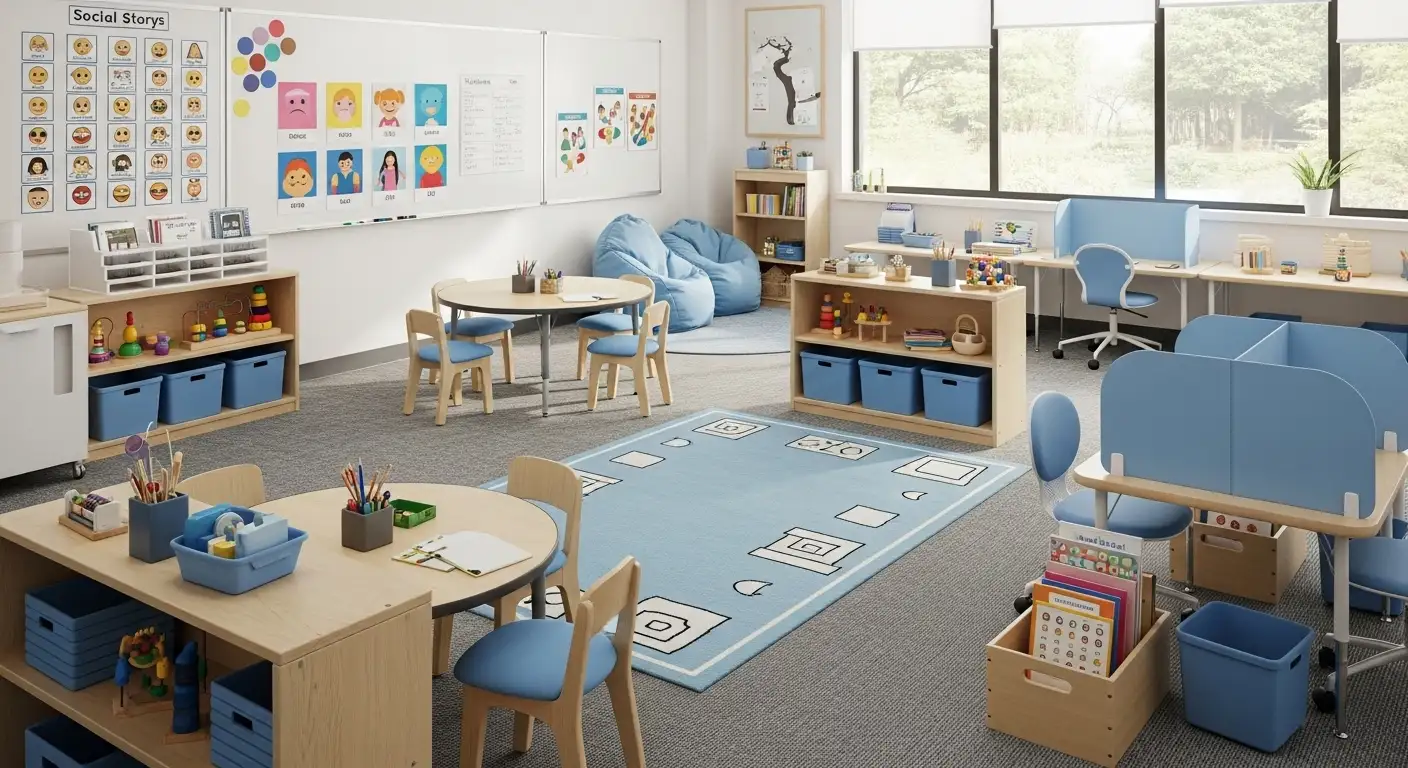How to Use Functional Communication Training in Autism
Transforming Autism Support Through Communication

Unlocking the Power of Functional Communication Training in Autism Intervention
Functional Communication Training (FCT) is a proven, evidence-based behavioral strategy that plays a vital role in supporting individuals with autism. By replacing problematic behaviors with effective, socially acceptable communication methods, FCT not only enhances quality of life but also fosters independence and social integration. This article explores how FCT works, its integration within autism treatment programs, practical implementation steps, and the compelling evidence supporting its effectiveness.
Understanding Functional Communication Training and Its Role in Autism Support
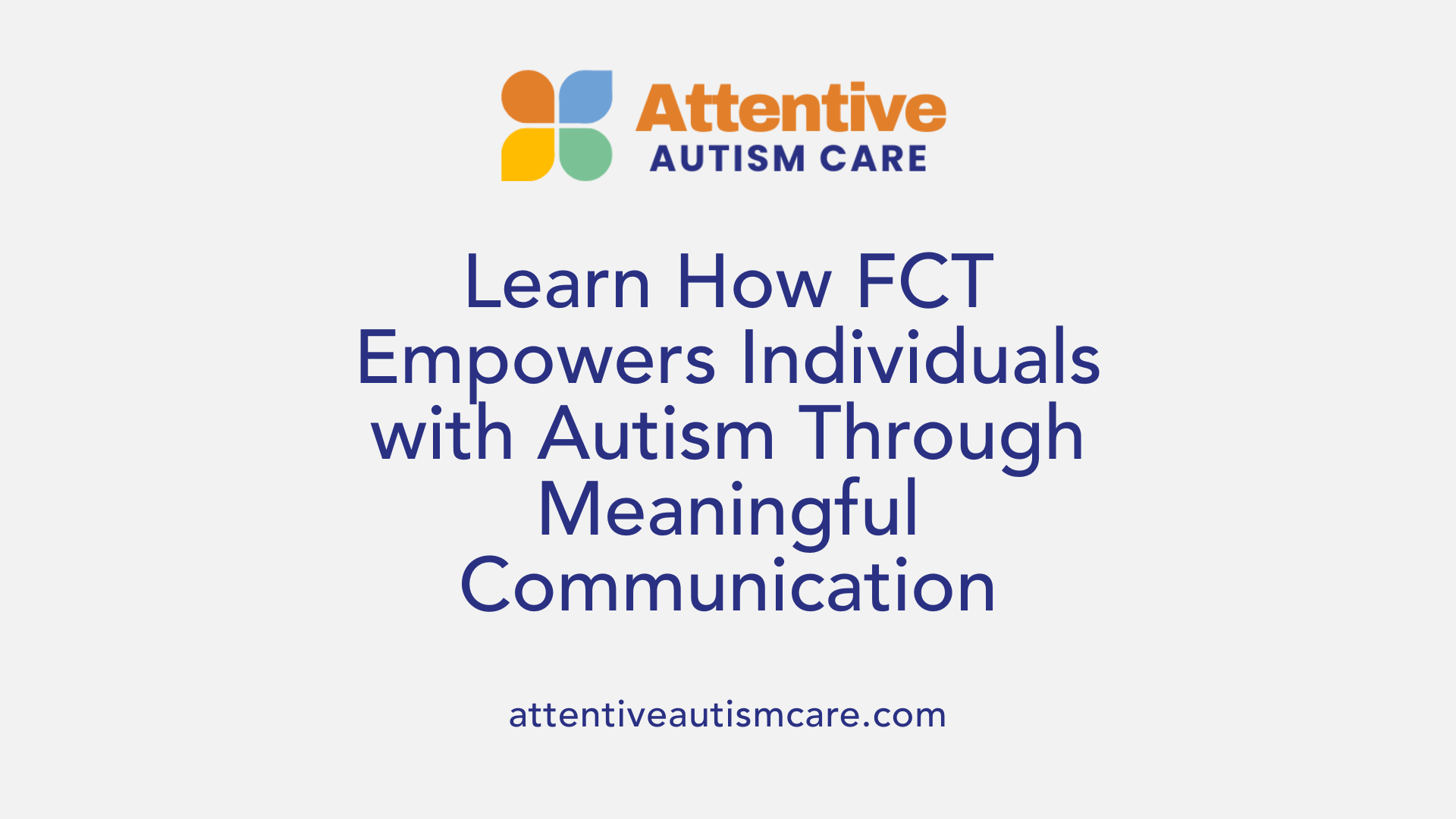
What is Functional Communication Training (FCT) and how does it support autism treatment?
Functional Communication Training (FCT) is a behavioral approach rooted in applied behavior analysis that aims to replace problematic behaviors with appropriate, socially-acceptable ways to communicate. It is especially beneficial for individuals with autism who often struggle to express their needs and emotions effectively. The process involves a detailed assessment, called a functional behavioral assessment (FBA), to determine why challenging behaviors occur—such as seeking attention, avoiding demands, or obtaining tangible items. Once the behavior’s function is identified, the therapist teaches a communication skill—such as a word, gesture, picture exchange, or device—that serves the same purpose.
FCT is more than just teaching communication; it’s about making communication meaningful and functional in everyday life. Reinforcement strategies, systematic prompting, and naturalistic teaching methods support the individual's learning process. Reinforcement thinning, which involves gradually reducing prompts or increasing delays, helps ensure the new communication skills are used reliably across various settings. Its goal is to reduce disruptive behaviors while simultaneously fostering better social interaction and independence.
Research consistently shows FCT is an effective, evidence-based intervention. It significantly decreases behaviors like aggression, tantrums, and self-injury that stem from communication difficulties. By enabling individuals with autism to express their needs accurately, FCT improves their overall quality of life.
How can I implement Functional Communication Training for children with autism?
Implementing FCT begins with a thorough assessment. First, conduct a functional behavior assessment to understand what triggers the challenging behaviors and what function they serve for the individual. This can involve observing the child in different settings, interview caregivers, and collecting ABC (Antecedent-Behavior-Consequence) data.
Based on this information, select a simple, effective communication response that aligns with the individual’s abilities and preferences—such as gestures, picture exchanges, or simple words. Teaching typically starts in a controlled, distraction-free environment. Use prompts to guide the child, starting with more support (least-to-most prompting) and gradually fading assistance as they become more independent.
Reinforcement plays a central role. Initially, provide consistent positive reinforcement—such as praise, access to preferred items, or social attention—immediately when the child uses the communication response correctly. Over time, systematically thin the reinforcement schedule by introducing delays or using less frequent reinforcement to promote natural responses.
Practicing across different settings and involving caregivers ensures the communication skills generalize beyond the therapy environment. Continuous data collection is vital to monitor progress and adjust strategies. Flexibility and patience are essential, as mastery may take weeks or months.
What are the benefits and effectiveness of Functional Communication Training in improving communication skills for individuals with autism?
FCT offers numerous benefits for individuals with autism. It’s proven to be highly effective in boosting functional communication skills, which translate into better social interactions, increased independence, and reduced problematic behaviors.
By teaching children and adults appropriate ways to express their needs, FCT reduces reliance on disruptive behaviors such as hitting, biting, or tantrums. This is particularly impactful for behaviors maintained by social reinforcers like attention or escape from demands.
The personalized nature of FCT, supported by thorough assessments and collaboration with families, ensures that interventions are tailored to each individual’s needs. Implementation across multiple settings—from home to school—further enhances skill generalization.
Ultimately, FCT improves overall quality of life by facilitating more meaningful communication and social participation, empowering individuals with autism to navigate their environments more effectively and confidently. The strong scientific backing underscores its role as a cornerstone of behavioral intervention for improving life outcomes in autism.
| Component | Description | Additional Details |
|---|---|---|
| Purpose | To replace challenging behaviors with functional communication | Addresses the root cause of behavior |
| Methods | Verbal, gestures, pictures, AAC devices | Customized to individual abilities |
| Strategy | Differential reinforcement, prompting, naturalistic teaching | Supports generalization and independence |
| Benefits | Reduced problematic behaviors, enhanced communication | Improves social, emotional, and functional skills |
| Evidence Base | Supported by research, included in best practices | Recognized by organizations such as NPDC |
Understanding how FCT integrates assessment, individualized teaching, reinforcement strategies, and caregiver involvement highlights its significance. When implemented properly, it can transform how children with autism communicate, interact, and participate in daily life—making it a powerful tool in the spectrum of autism interventions.
Integrating FCT within Autism Interventions and ABA Therapy
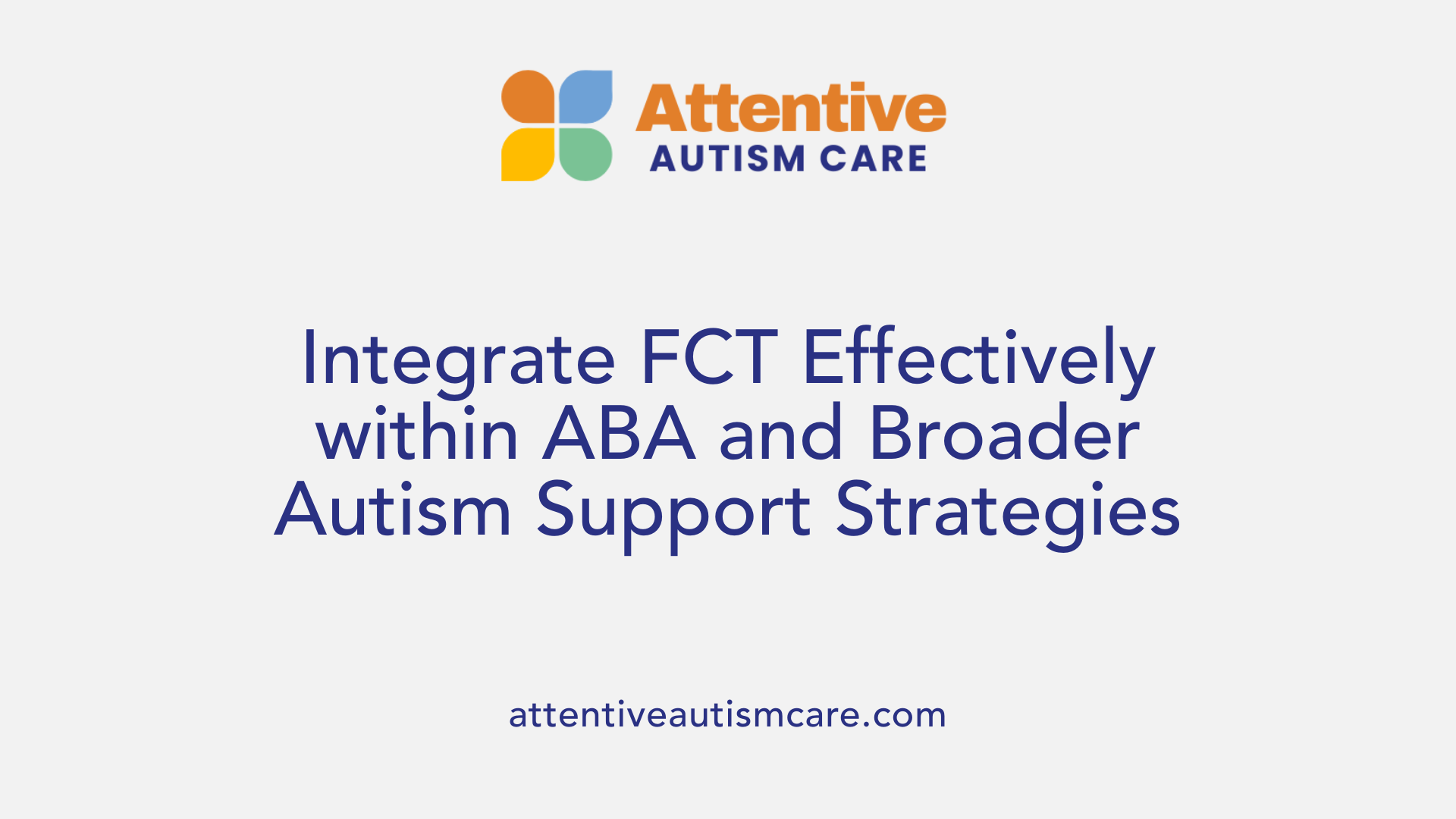 Functional Communication Training (FCT) is a vital component of Applied Behavior Analysis (ABA) therapy for individuals with autism. Its primary role is to systematically teach alternative communication skills that serve the same function as problematic behaviors, such as aggression, tantrums, or self-injury.
Functional Communication Training (FCT) is a vital component of Applied Behavior Analysis (ABA) therapy for individuals with autism. Its primary role is to systematically teach alternative communication skills that serve the same function as problematic behaviors, such as aggression, tantrums, or self-injury.
Within ABA therapy, FCT is integrated by beginning with a detailed functional behavior assessment (FBA). This assessment helps identify the triggers and reinforcers maintaining challenging behaviors. Based on these insights, practitioners select appropriate communication responses—whether verbal, sign language, gestures, picture systems, or communication devices—that are easier, quicker, and more socially acceptable.
The teaching process involves modeling, providing prompts, and reinforcing successful communication attempts. Over time, prompts are gradually faded to encourage independence, and reinforcement is thinned carefully to ensure the behavior persists without excessive dependence on prompts or prompts. To promote skill generalization, ABA teams often include caregiver and teacher training, environmental modifications, and practice in natural settings.
Best practices focus on individualized assessment, consistent reinforcement, and ongoing data collection. Regular monitoring of progress through data review helps determine whether the intervention needs adjustments. This iterative process ensures that communication improvements are maintained and generalized across different settings, promoting long-term success.
Collaboration among therapists, parents, and educators is crucial. Regular communication ensures that cues, reinforcement, and strategies are aligned, providing a seamless environment where communication skills are reinforced consistently. This collaborative effort facilitates smoother integration of FCT within a comprehensive ABA program, ultimately improving communication and reducing problematic behaviors.
Research Evidence Supporting FCT in Autism Treatment
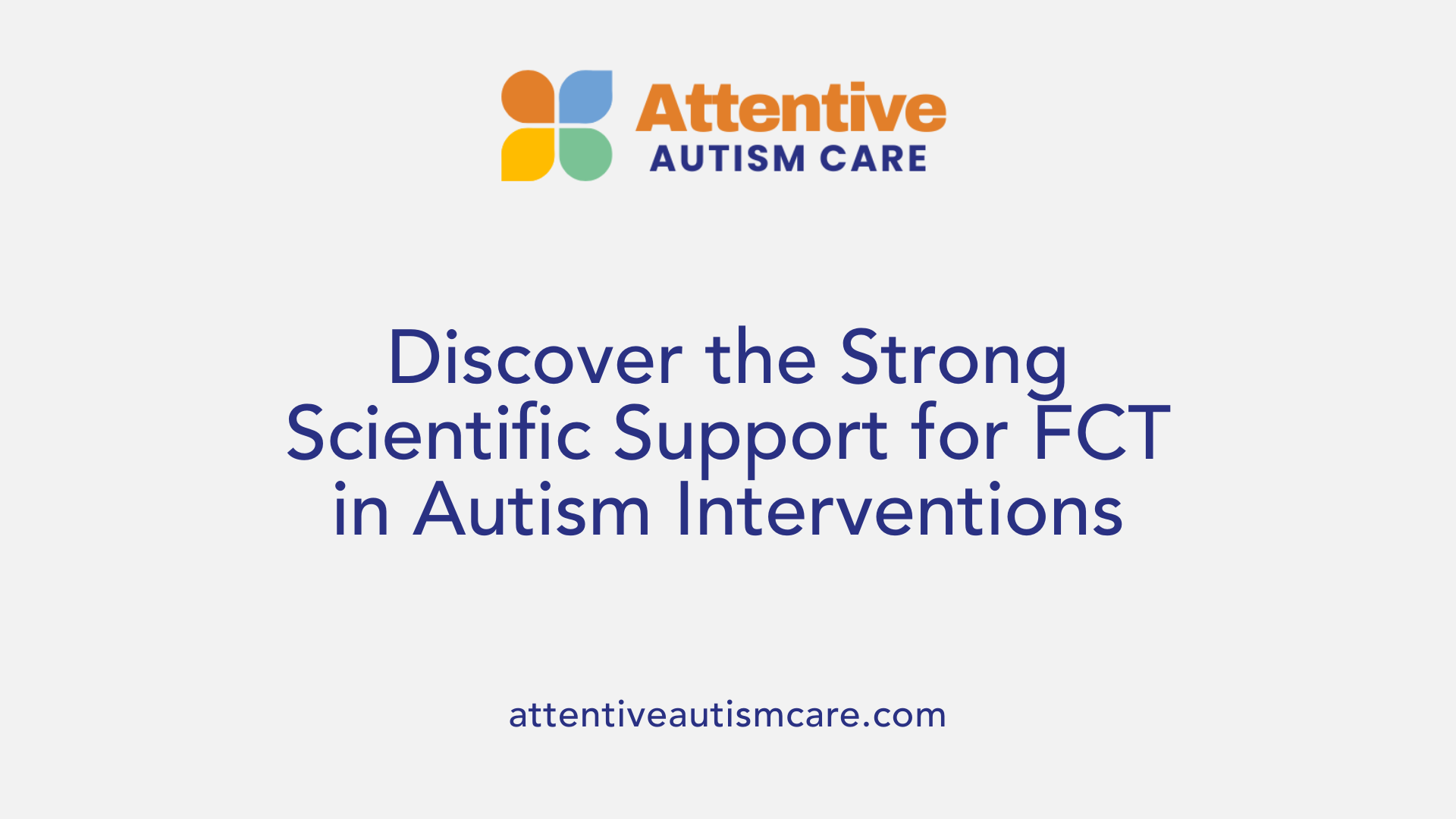
What does the research say about the effectiveness of Functional Communication Training for individuals with autism?
Research consistently supports the use of Functional Communication Training (FCT) as a proven intervention for autism. A substantial body of evidence, including numerous randomized controlled trials and reviews, demonstrates that FCT effectively reduces challenging behaviors such as aggression, self-injury, and tantrums.
Studies show that FCT not only diminishes problematic behaviors but also enhances communication skills. It is effective across a broad age range—from preschool children to adolescents—and in various settings like homes, schools, and clinics.
Autism treatment guidelines endorse FCT as an evidence-based practice. The success of FCT depends on accurately identifying the function of problematic behaviors using functional assessments, and then teaching a suitable communication response that replaces the behavior. When properly implemented, FCT can lead to meaningful behavioral improvements and a better quality of life for individuals with autism.
Does Functional Communication Training qualify as an antecedent intervention?
FCT can be viewed as an antecedent intervention due to its focus on modifying the environment to teach functional communication before problematic behaviors occur.
By establishing effective communication skills, FCT proactively prevents behaviors driven by communication difficulties. For example, teaching a child to request an item verbally or through a picture exchange reduces frustration that might otherwise lead to aggression or self-injury.
Though FCT also involves reinforcement and skill-building, its core principle of altering antecedent conditions aligns with that of antecedent interventions. It sets the stage for more adaptive behavior by promoting alternative responses that serve the same purpose as the problematic ones.
In summary, FCT functions both as a behavior intervention and an environmental modification strategy aimed at preventing disruptive behaviors by teaching individuals new, effective ways to communicate. This dual role classifies FCT as an antecedent-based approach within behavioral therapy.
The accumulated research confirms that implementing FCT as part of comprehensive behavioral support can significantly benefit individuals with autism, supporting their communication development and behavioral health.
The Science and Principles Behind FCT
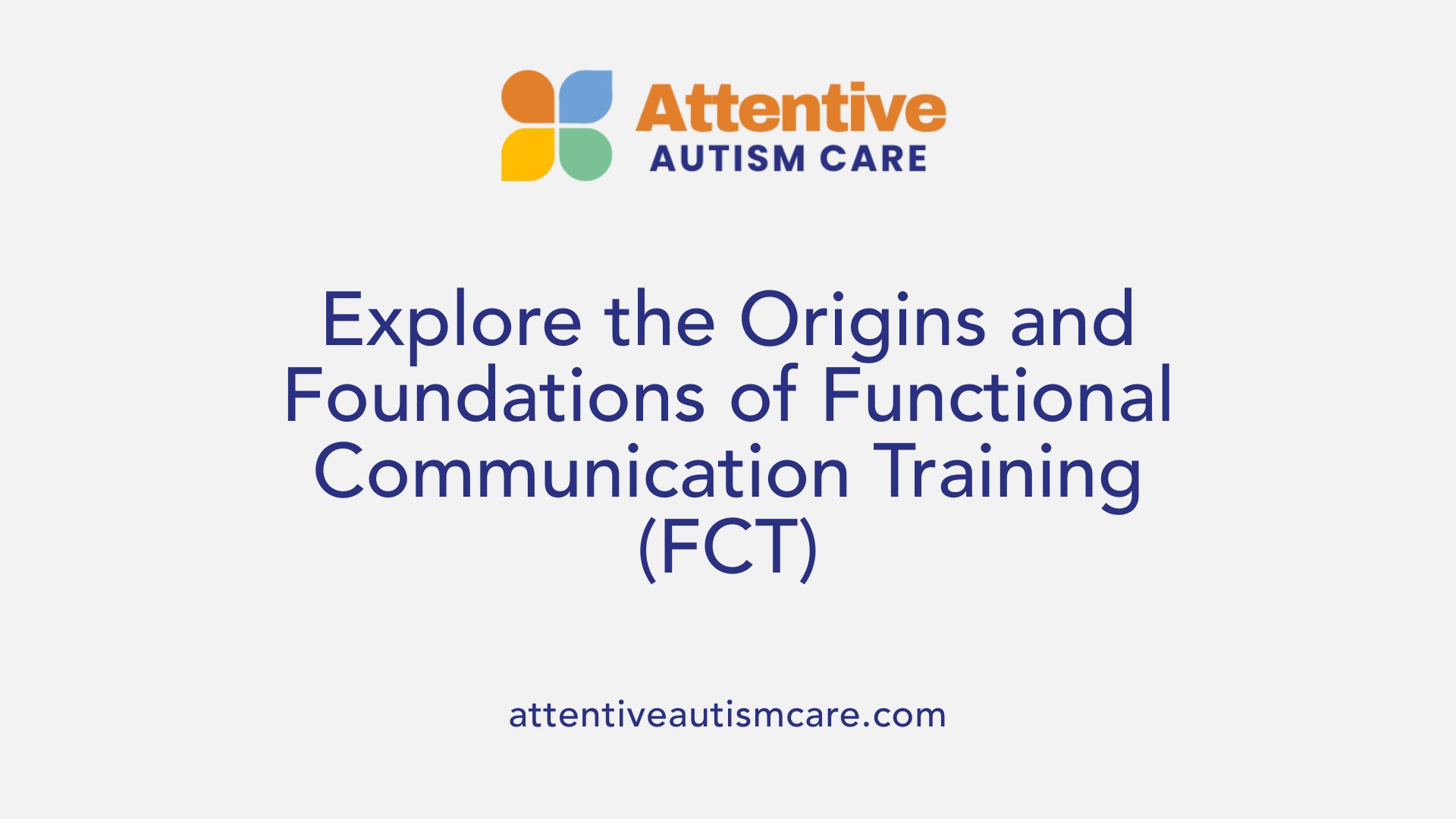
Historical background
Functional Communication Training (FCT) was introduced in 1985 by researchers Carr and Durand. It was developed as a way to address problem behaviors in individuals with autism and other developmental disabilities by strengthening their communication skills. Over the years, scientific studies have shown that FCT effectively reduces problematic behaviors such as aggression, tantrums, and self-injury by replacing them with functional communication strategies. Its development is rooted in Applied Behavior Analysis (ABA), emphasizing the importance of understanding the behavior's purpose.
Core components and procedures
FCT involves several critical steps. First, a detailed Functional Behavior Assessment (FBA) is performed to identify the purpose or function behind a child's challenging behavior, such as gaining attention or avoiding demands. Next, an appropriate communicative response is selected based on effort, ease of learning, social recognition, and existing skills—these can include speech, signs, gestures, or pictures. The teaching process incorporates modeling, prompts, and reinforcement to help the individual adopt the new behavior effectively.
During training, positive reinforcement encourages correct use of communication responses, while challenging behaviors are ignored or less reinforced. As skills develop, reinforcement is gradually thinned to promote generalization across settings and caregivers. This involves introducing delays or other stimulus controls without losing the progress made.
Response to challenging behaviors
FCT is designed to address behaviors that serve specific functions, such as seeking attention, escaping uncomfortable situations, or accessing preferred items. By teaching alternative, socially-acceptable ways to communicate these needs, FCT reduces the motivation to display disruptive behaviors.
Practitioners, including speech-language pathologists and behavioral psychologists, typically implement FCT in controlled environments initially, then support its transfer to naturalistic settings like classrooms or homes. Parental involvement and training are essential for maintaining progress outside clinical settings. Overall, FCT emphasizes understanding behavior functions and systematically teaching functional communication to improve quality of life and social abilities in individuals with autism and related disabilities.
Practical Strategies for Success and Long-term Outcomes
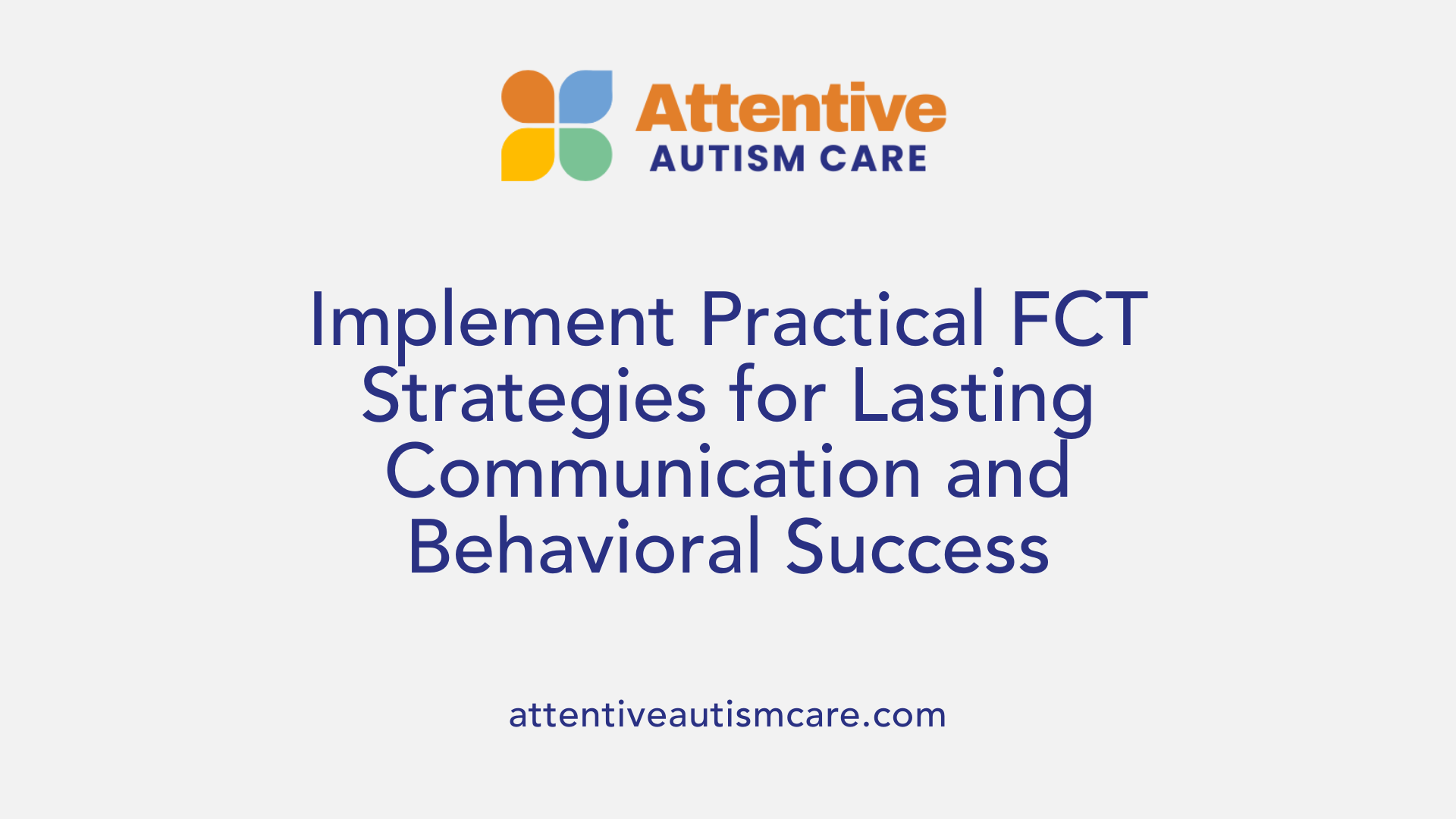
Teaching Methods
Implementing effective teaching strategies is crucial for the success of Functional Communication Training (FCT). It is recommended to start with simple, recognizable, and quick-to-learn communication responses like gestures, pictures, or vocalizations. Small, manageable steps help build confidence and promote mastery. Teachers and therapists often use prompting, shaping, and reinforcement to encourage correct use of communication skills.
Errorless learning techniques are valuable, especially during initial training, to prevent frustration and ensure consistent success. It’s important to tailor teaching methods to each individual’s current abilities, gradually increasing complexity once foundational skills are secure. Using visual supports like choice boards, visual schedules, or social stories can enhance understanding and foster independence.
Generalization Techniques
One of the core goals of FCT is to ensure that communication skills transfer across different settings, people, and situations. To promote generalization, practitioners should intentionally practice communication in natural environments, involving caregivers, teachers, and peers. This can be achieved through planned, controlled opportunities that simulate real-life contexts.
Gradually fading prompts and reinforcement schedules help individuals rely less on external cues and develop spontaneous communication. Using varied reinforcers and ensuring the alternative communication response is reinforced consistently across settings encourages widespread use. Incorporating natural routines and activities enhances relevance and encourages the individual to apply their skills beyond therapy sessions.
Caretaker and Team Collaboration
Success with FCT depends heavily on consistent implementation across all caregivers and team members. Training parents, teachers, and support staff ensures that reinforcement strategies and prompts are used uniformly, creating a predictable environment that supports learning.
Regular communication and data sharing among team members allow for monitoring progress and addressing challenges promptly. Collaborative goal setting helps keep interventions aligned with the child’s evolving needs. Parents and caregivers play a vital role in practicing communication skills at home, reinforcing new behaviors, and maintaining motivation.
In summary, employing structured teaching methods, fostering naturalistic generalization, and ensuring seamless collaboration among caregivers and professionals can lead to sustainable improvements in communication and behavior. These strategies support long-term success, turning initial gains into lasting skills that enhance quality of life for individuals with autism.
Moving Forward: The Impact of FCT in Autism Support
Incorporating Functional Communication Training into autism interventions offers a powerful pathway toward reducing challenging behaviors and enhancing communication abilities. When carefully conducted with thorough assessment, individualized planning, and collaborative efforts, FCT can improve social engagement, independence, and overall quality of life for individuals with autism. Supported by a robust body of research, FCT remains a cornerstone of evidence-based autism therapy, emphasizing the importance of proactive, functional communication as a fundamental component of comprehensive care.
References
- Functional Communication Training: A Review and Practical Guide
- Functional Communication Training (FCT) - Raising Children Network
- Helping Children With Autism Learn to Communicate
- Simple Steps to Functional Communication - Commonwealth Autism
- [PDF] Functional Communication Training - Autism Research Institute
- What is Functional Communication Training for Autism - Motivity
- [PDF] Module 3: Teaching Functional Communication Strategies - DSHS









































































